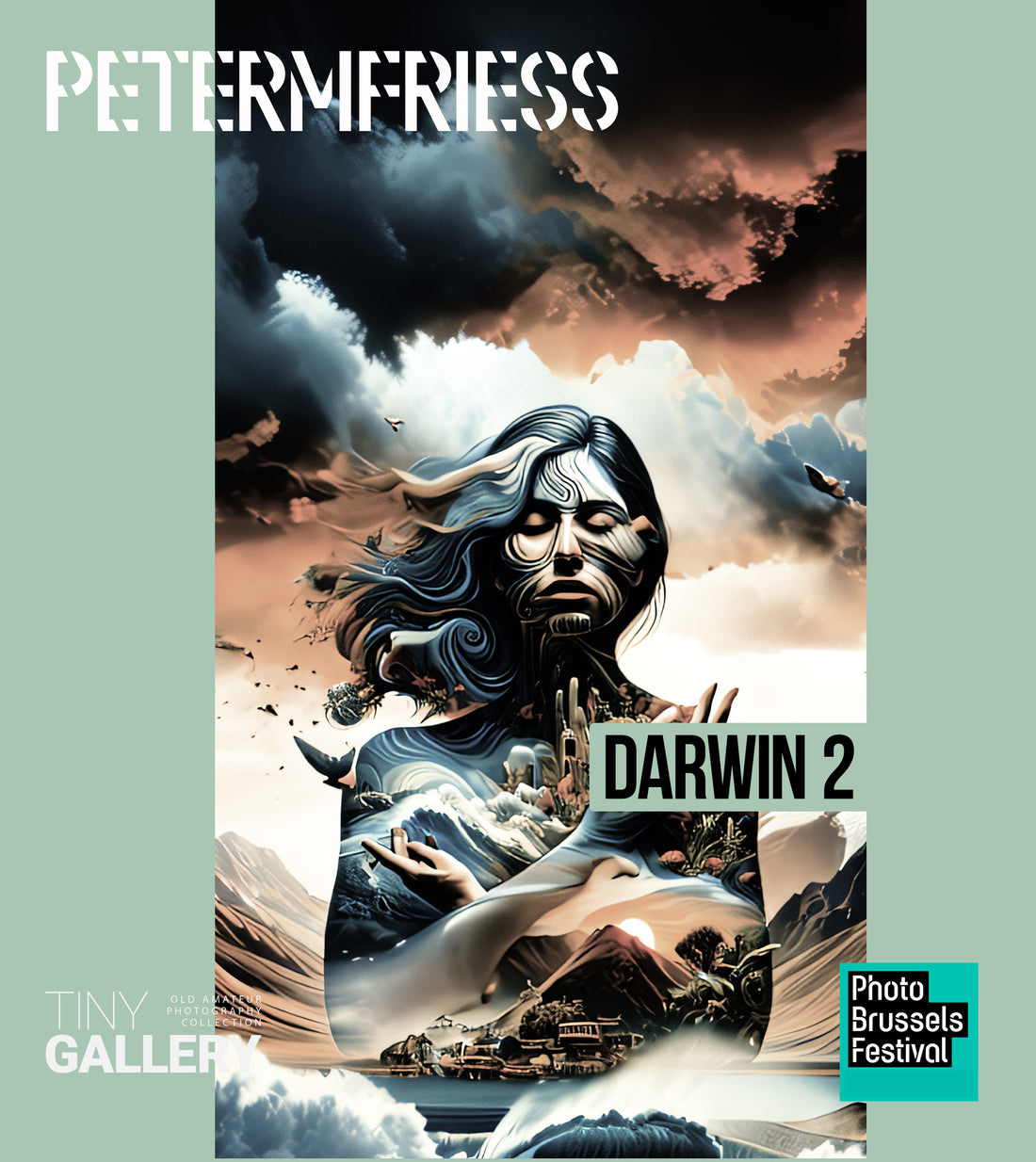
Darwin 2
The Tiny Gallery in Brussels, as part of the current photo festival, presents itself as a space for innovation and reflection on the intersection between art, technology, and history. This venue, dedicated to photography, goes beyond traditional boundaries by integrating visual works created by artificial intelligence (AI), thus inviting a deep exploration of contemporary artistic possibilities.
At the heart of this exploration is the work "Darwin 2" by the artist Petermfriess. This piece represents a fascinating fusion between technology and art, illustrating how AI can not only imitate, but also extend human creative capabilities. Indeed, "Darwin 2" is not just a visual work; it is a meditation on the evolution of artistic creation in the digital age, a subtle and profound nod to Charles Darwin's theories of evolution.
In parallel, the calotype prints of the artist Olivier Guyaux remind us of the importance and beauty of historical photographic techniques. Calotypes, the ancestors of modern photography, represent an era where each image was the result of a handcrafted and chemical process. The juxtaposition of these works with AI creations like "Darwin 2" underscores a fascinating contrast between the old and the new, between the artist's hand and the computer's code.
By integrating these different forms of art, the Tiny Gallery stimulates profound reflection on the nature of artistic creation and the role of the artist in the era of artificial intelligence. This dialogue between past, present, and future offers visitors a unique experience, where the history of art blends with its future potential, thus challenging our perceptions and understanding of what art can be.
It is in this context that the Brussels photo festival acquires an additional dimension, becoming a fertile ground for the exploration of these new artistic frontiers, and inviting the public to reflect on the place of humans in art at a time when machines are beginning to play an increasingly predominant role in the creative process.
